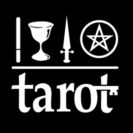Comparing tarot decks is a favourite activity. On other blogs, writers compare Thoth tarot type decks with Aleister Crowley and Frieda Harris’s original Thoth Tarot. It is plain that the bloggers just don’t get it – it’s not their fault – blame the designers of the Thoth clones! Is it worth comparing other decks to the Thoth Tarot?
Here is the problem. How can that be you ask, when there are gazillions of tarot decks being designed and printed almost daily? Simple! Obsession with the visuals dominates and destroys the aesthetics of the Tarot. It’s as though I can create a photo on my mobile phone that looks like Da Vinci’s Mona Lisa that it has artistic merit.
The teaching and comprehension of tarot is predicated on the division of the deck into each card. My ersatz photo is of a woman with similar features, but I have added nothing of significance. So, if a so-called Thoth clone rejigs the deck using similar shapes and colours to the original, what have I learned? In other words, why not call these decks “Rider-Waite rehashes that are superficially akin to the Thoth deck?”. The title is not snappy, but at least it has the merit of honesty.
I have just finished creating a series of videos on Youtube about the Major Arcana of the Book of Thoth. I focussed not on the artwork or the colours, but on Crowley’s fascinating structure and textual revelations. Even though I have studied this decks for years, I still found it challenge. What struck me was the way Crowley nimbly takes the reader backwards and forwards through the Major Arcana, slipping in a visual, literary or textual links to other cards that work backwards and forwards in time. Woven into the narrative are angles on any number of philosophies, magical systems, spiritual structures. Look closely, and you will find that he even sequences magical rituals, not to mention sex magick…
Until I see any evidence of that level of subtlety and brilliance within the mishmash, please don’t ask me what I think of them!
